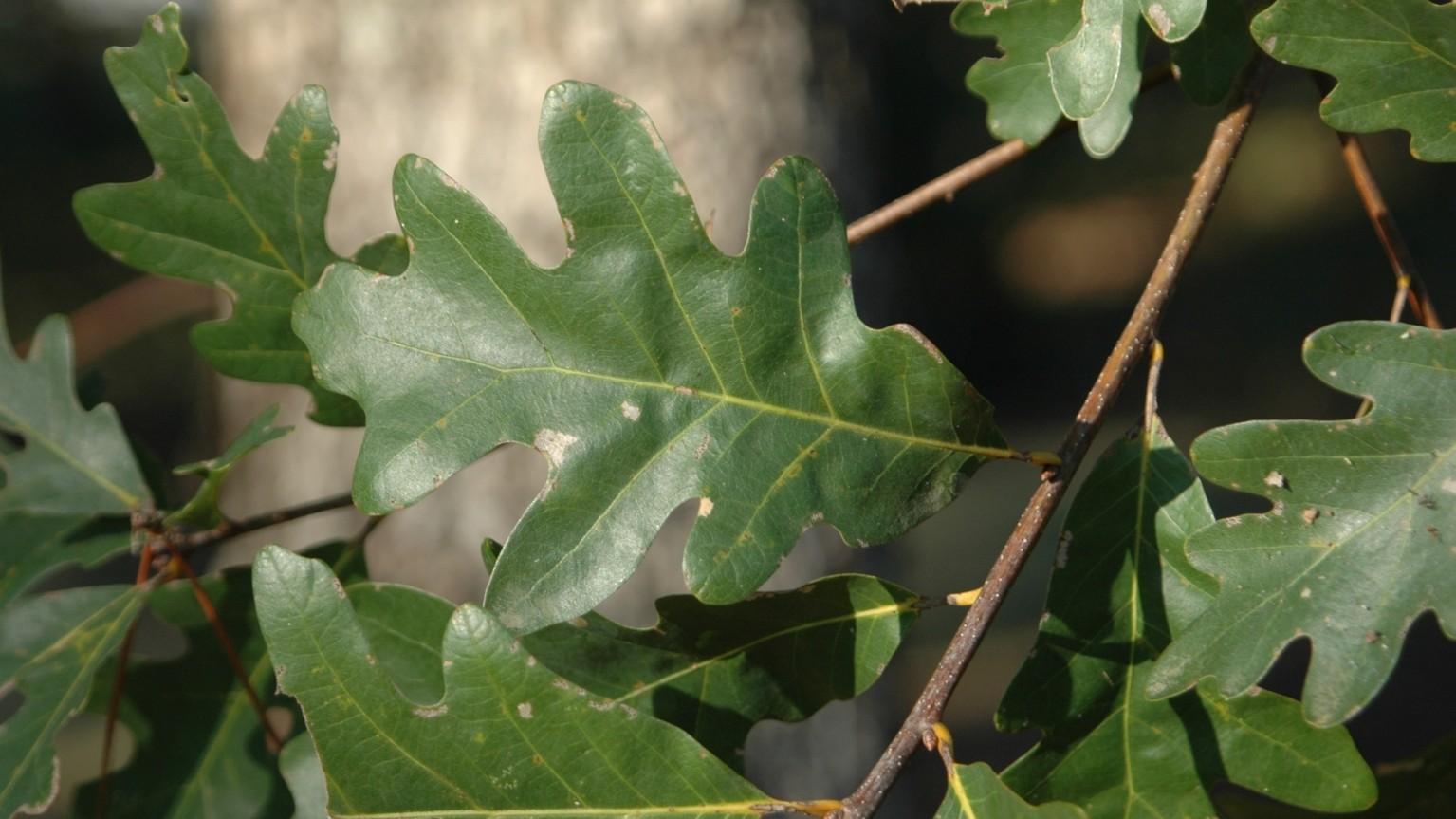About white oak
Quercus alba
Deciduous Tree
Beech Family
Maryland Distribution: moist to dry woodland areas
Height: 60 - 100 feet
Blooms: inconspicuous, March - May
Sun: full sun to shade, although growth of saplings is slow in full shade
Soil: medium to dry soils, all textures, acidic (pH below 6.5)
Garden Use & Maintenance: In summer the leaves have a subtle bluish cast. In fall they turn bronze to deep wine red. In the forest conditions, white oaks grow straight up toward the light to reach heights of over 100 feet, but in more open conditions the tree develops huge horizontal branches and a majestic silhouette.
You may purchase a sapling or simply plant an acorn. Either way, your contribution could benefit the world for hundreds of years to come. Use white oak as a specimen tree or group it into small stands, for wildlife plantings, and for reforestation. Do not plant into situations where soil compaction, fertilization, or other landscape activities will damage the root system and its mycorrhizal partners. For maintenance consider the shocking option of not raking up the leaves, they serve many functions left in place. Prune winter through spring if needed. The majestic white oak is Maryland's official state tree.
Wildlife: Acorns provide food for song birds, woodpeckers, bobwhites, squirrels, chipmunks, deer, and even people. Host plant for many insects including walking sticks and several species of butterfly.
Young trees are susceptible to damage by deer and rabbit.

White oak, fall color
